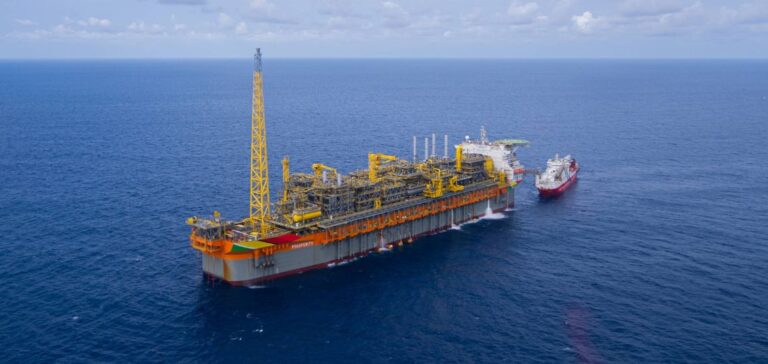The ExxonMobil-led consortium has entered a new phase in the development of offshore oil resources in Guyana with the Hammerhead project. This project represents the seventh oil initiative in the Stabroek block, with a production target of 120,000 to 180,000 barrels of oil per day. Located in the south-central portion of the block, Hammerhead is scheduled to become operational in 2029.
This development includes the construction of 14 to 30 production and injection wells. In addition to oil production, the project is designed to handle natural gas production ranging from 60,000 to 120,000 Mcf per day. Offshore processing equipment will include an FPSO (Floating Production Storage and Offloading) capable of storing between 1.4 and 2 million barrels of oil, with third-party tankers planned to export the oil to international markets.
Infrastructure and Production Capacity
The infrastructure for the Hammerhead project comprises subsea equipment fixed to the seabed and an FPSO unit on the surface. This configuration dehydrates and compresses the associated gas produced. The Guyanese government already received preliminary documents fromExxonMobil last June, although the initial details were limited.
With Hammerhead reaching peak production, the Stabroek block is expected to reach production of over 1.56 million barrels per day. Currently, the Liza Phases 1 and 2 FPSOs and Payara are producing over 600,000 barrels a day. Other projects under development, such as Yellowtail scheduled for 2025, Uaru for 2026 and Whiptail for 2027, will each add 250,000 barrels per day to the block’s total capacity.
Economic and environmental impact
Since 2015, the Guyana Basin has been recognized for its estimated recoverable resources of 18.7 billion barrels of oil equivalent, placing it as the fifth largest basin in Latin America. Analysts at S&P Global Commodity Insights forecast peak production in 2037 at 2.3 million barrels of oil equivalent per day, 90% of which will be oil.
The infrastructure required to support this production implies significant investments, estimated at over $120 billion in present value. Major investors include ExxonMobil, Hess, CNOOC, APA and TotalEnergies, responsible for 94% of total planned expenditure in the basin.
The first gas monetization projects, such as converting gas into electricity, are already underway and should have a significant impact on Guyana’s energy mix. The region could also become an exporter of LNG (liquefied natural gas) by the end of the 2030s, with the implementation of two floating LNG units.






















